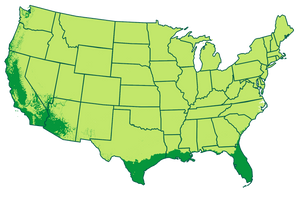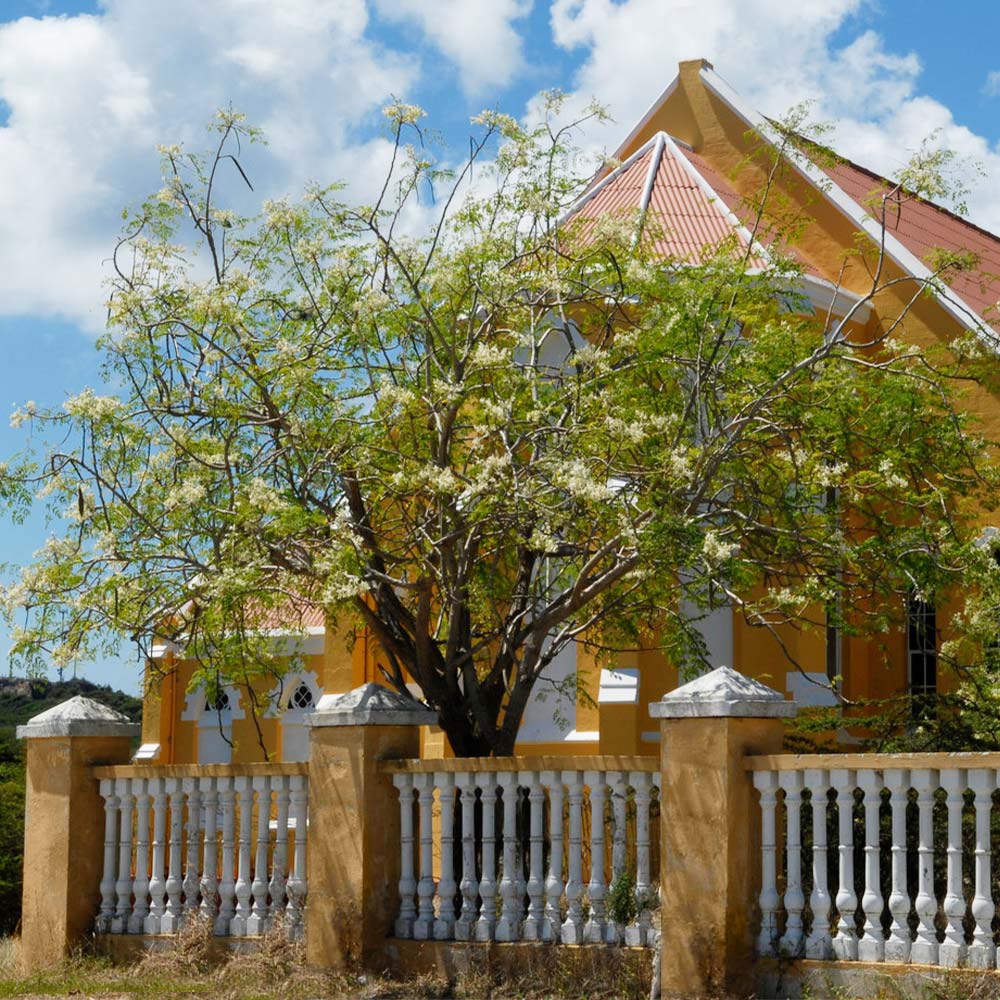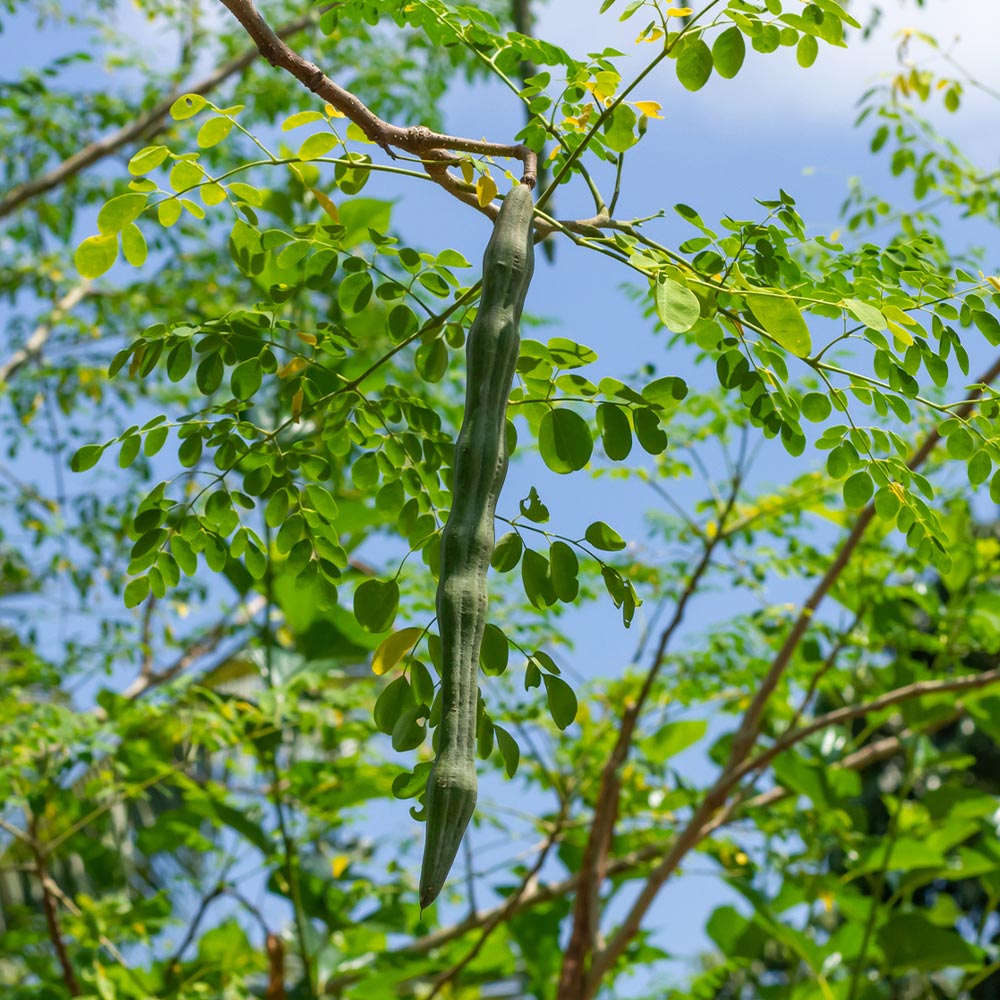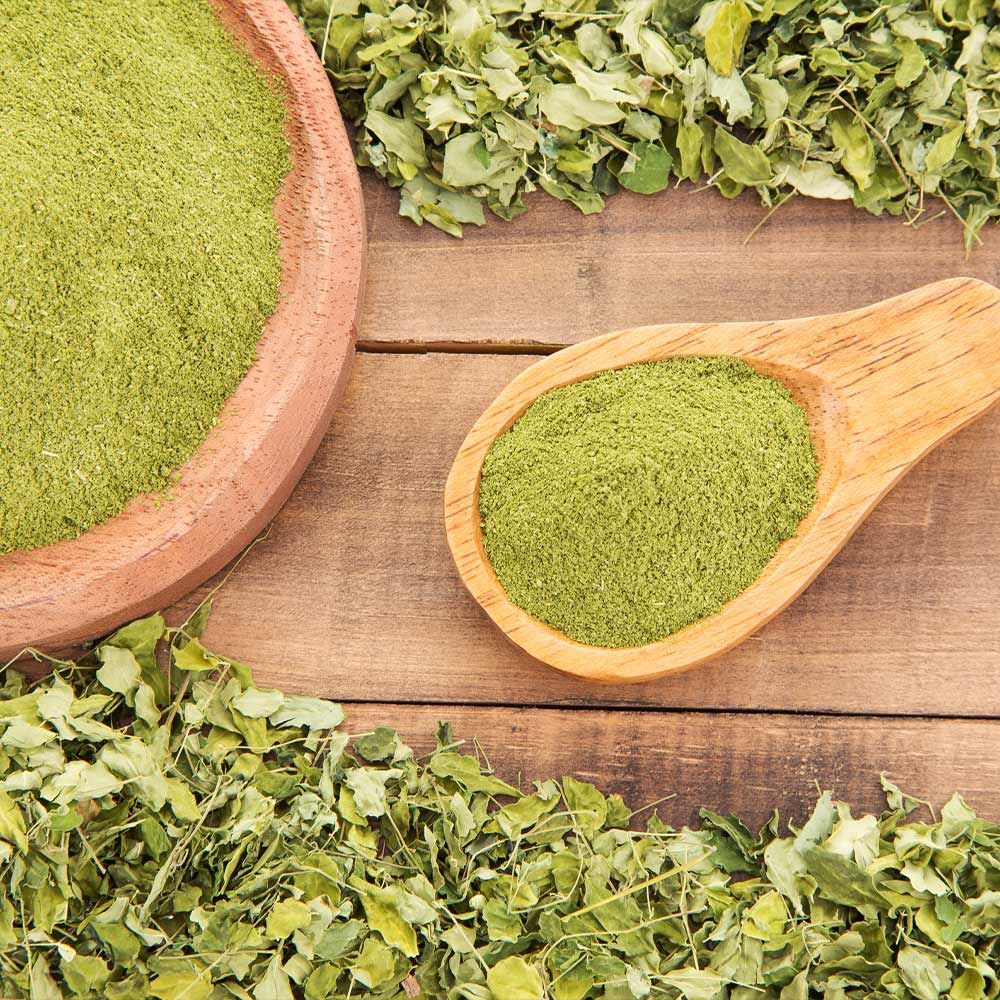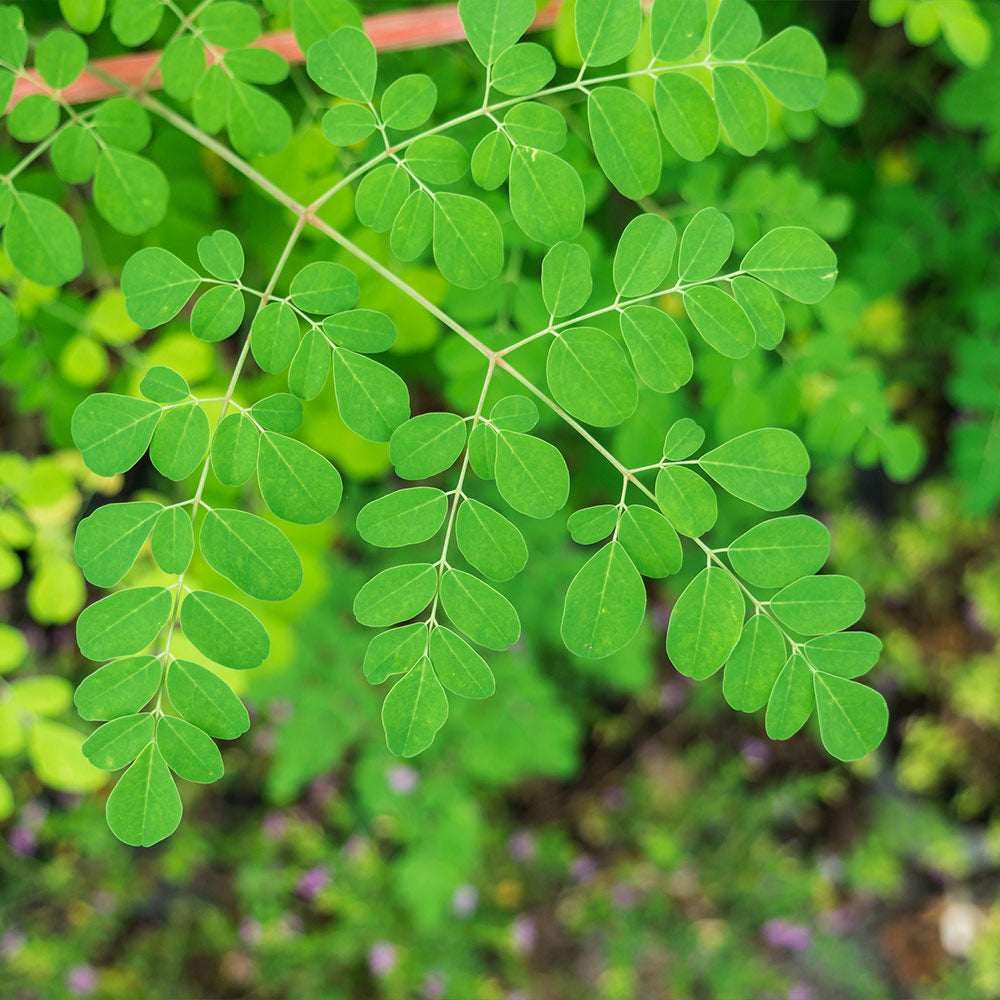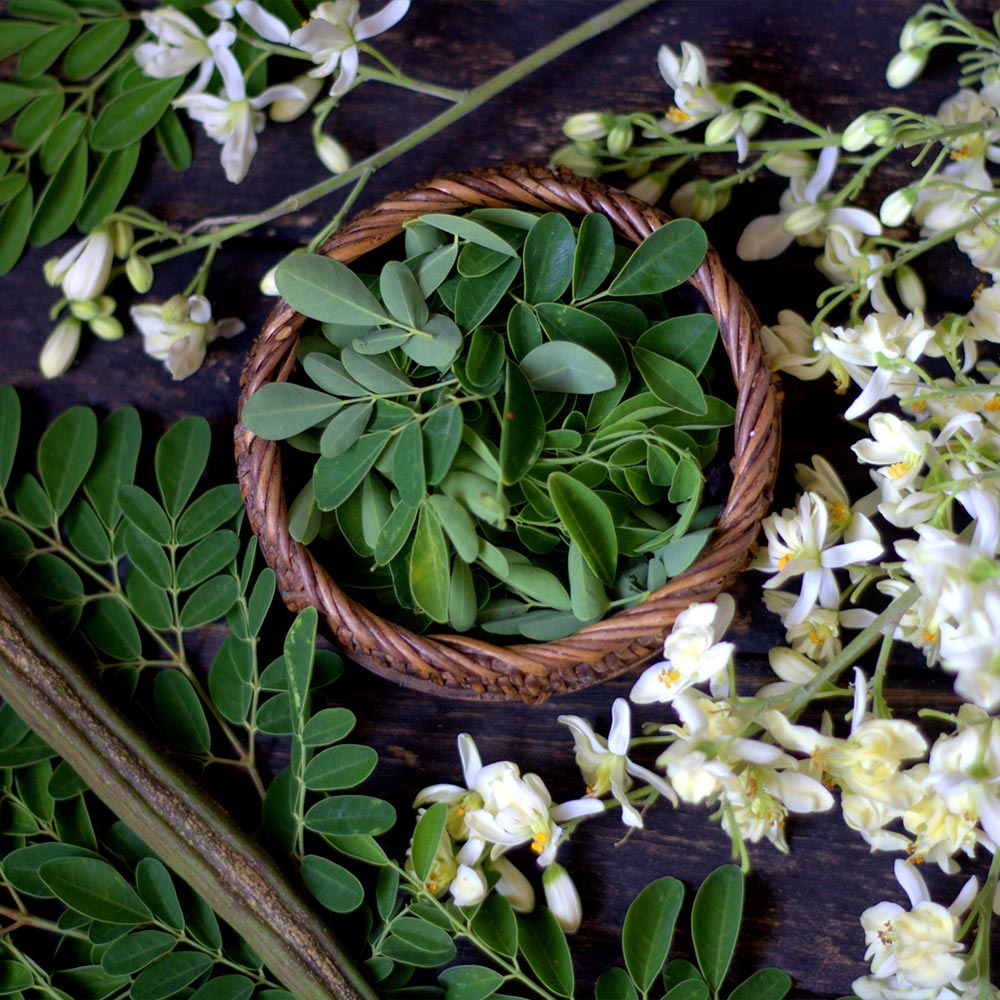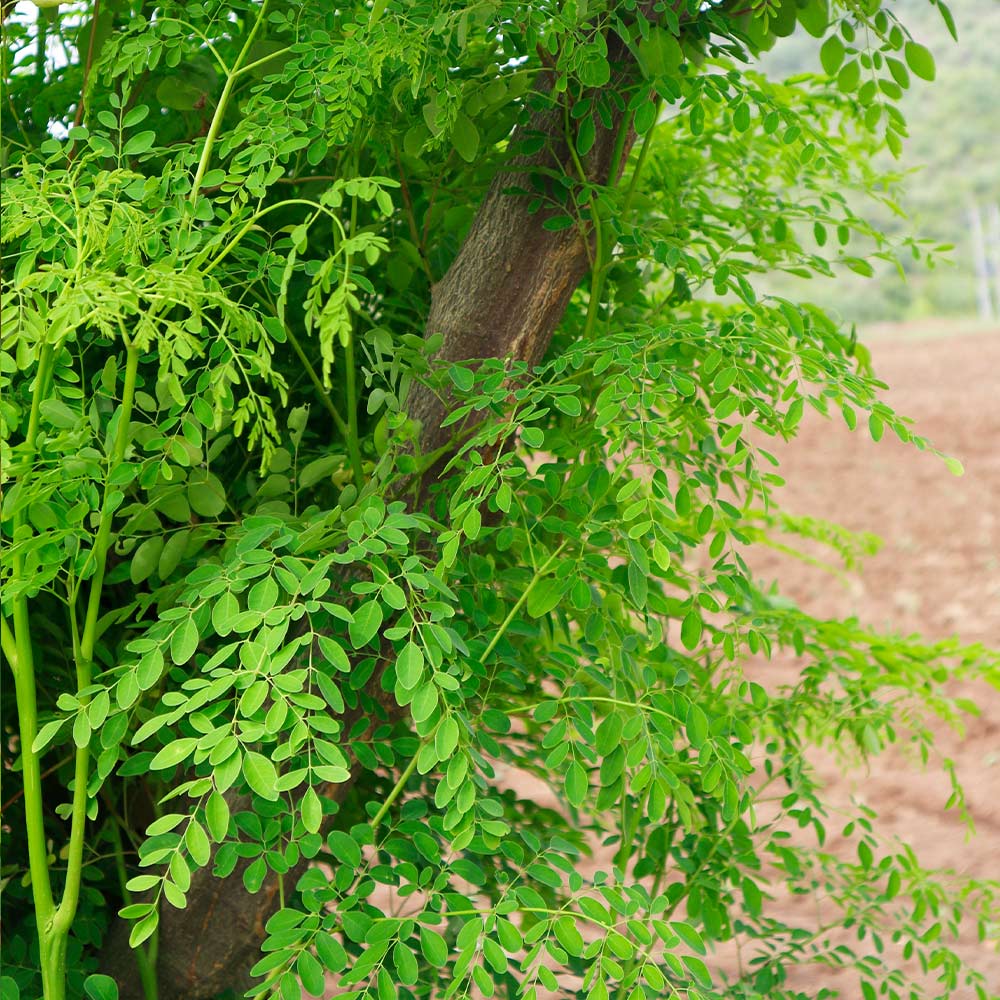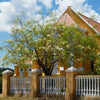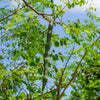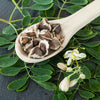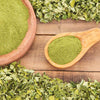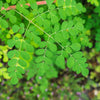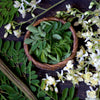* Images shown are of mature plants

Have questions? Talk with our Plant Experts (800) 973-8959
Save 25% on $200+ with code FALL25.
Questions? Call our plant experts: (800) 973-8959
One Of The Most Nutritious Plants Available
Moringa Trees, which are also known as 'Ben Oil Trees', are cultivated all over the world and are highly valued for their edible parts that are extremely high in nutrients and minerals, as well as their beautiful ornamental features.
Grab your fork because the leaves, pods, and seeds are edible. Even the roots are edible, causing this tree to be known as the 'Horseradish Tree,' because they have a similar flavor. These parts of the Moringa Tree are often used in recipes all over the world because of their nutritious value.
Moringa leaves, pods and seeds have more vitamin C than four oranges combined as well as high amounts of calcium, potassium, iron, zinc and more. They're also high in antioxidants, which is great for your overall health.
Instead of running to the store for an expensive bottle of multivitamins, simply pick a few leaves for a snack filled with nourishment.
By cooking the leaves in boiling water, or eating them fresh you'll be giving your immune system a boost. The seedpods are often cooked similar to the way green beans are prepared and enjoyed while the seeds are best when baked.
Plant your Moringa trees in the yard to have highly nutritious foliage a short walk away, or place your trees in containers and keep them inside to have tons of healthy snacks within arm's reach.
Moringa trees are a delight to watch as their lush green leaves pop against their uniquely white colored bark. Your tree will stand out as one of the most stunning plants in the neighborhood once it erupts with hundreds of breathtaking white flowers.
After Moringa Trees bloom they start growing their unique pods filled with seeds. The pods are about a foot long and turn a shade of light brown, resembling drumsticks; as a result, the tree is often referred to as the 'Drumstick Tree'. The drumsticks combined with the tree's smooth white bark give it an alluring exotic look.
Our Warehouse Manager is one of the few people in the world who does not like Moringa. He says it's like shipping a giant Mirco-Green. About 15% arrive with some minor broken branches or stems. This is cosmetic and does not affect the tree. Just prune off any damaged foliage or stems and watch the new ones pop out even thicker.
We know fast growing plants, and this is probably the fastest we have seen. Our 3 ft. trees can turn 8 ft. in a matter of weeks during the growing season. They like to be pruned and thrive in containers.
This is a prolific little food factory. Cut off the stems and greens and it comes back even more bountiful.
With healthy lifestyles on the rise, we can't keep the nutritious Moringa tree in stock. Don't hesitate to order yours today.
Pollination Info
Moringa Tree Pollination
Moringa Trees are self-fertile. You will get fruit with only one plant. However, adding an additional Moringa Tree will drastically increase the size of your crop.
Planting & Care
1. Location: When planting a Moringa Tree, find a location that offers full sun. This tree can adapt to a wide range of soil types as long as it drains well, but prefers sandy loam soil. If you need to increase drainage, try mixing in some compost with your native soil to help.
2. Planting: Moringa Trees need plenty of sunlight...6 to 8 hours per day is best. They can tolerate some shade but thrive in full sun. These trees also do better in areas with high humidity.
If you're container planting, ensure the container you choose has drainage holes and is about twice the width of your plant's shipped container.
When you're ready to plant (in the ground or in a container), make a hole twice as wide and just as deep as the root system. Place the tree in the hole and backfill it with your well-draining soil. After planting, mulch around the tree to conserve moisture.
3. Watering: Generally, we recommend watering about once or twice weekly. Allow the top 2 to 3 inches of the soil to dry out completely before watering again.
For potted Moringas, stick your index finger into the soil down to about 2 inches. If there is moisture present, hold off on watering until it feels drier at that depth, and when you do water, stop once you see it escaping the drainage holes at the base of the pot.
4. Fertilizing: Feed your Moringa tree with a balanced fertilizer. They are low-maintenance trees and do not require heavy or frequent fertilization. A fresh layer of compost is all that is needed yearly to keep the Moringa happy and growing.
5. Pruning: Remove any dead wood and ventilate the center of the tree. Remove suckers as they form/grow from the base. Pruning can be done at any time of the year for light maintenance. For heavy shaping, save that for the wintertime.
FAQs
Why is Moringa known as the miracle tree?
What part of the Moringa Tree is edible?
Can you grow Moringa Trees at home?
How long do Moringa Trees take to grow?
Shipping Details
Estimated Shipping Time: Most orders ship immediately. As noted on the website, some items are seasonal, and may only ship in spring or fall. Once your order is shipped, you'll receive an email with a tracking number.
| Amount of Order | Shipping Charge |
|---|---|
| Less than $49 | $19.95 |
| $49 + | FREE SHIPPING! |
Product Details
| Mature Height: | 25-35 ft. |
| Mature Width: | 15-25 ft. |
| Sunlight: | Full Sun |
| Growth Rate: | Fast Growing |
| Botanical Name: | Moringa oleifera |
| Does Not Ship To: | AK, AZ, HI |
| Grows Well In Zones: | 3-11 patio / 9-11 outdoors |
| Your Growing Zone: | # |
